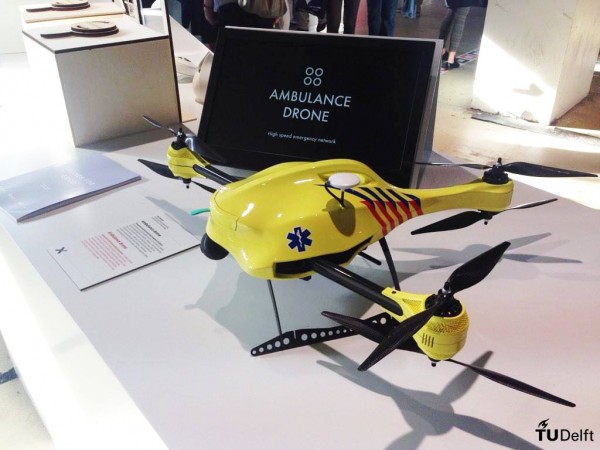Ambulance Drone Comes to Aid of Heart Attack Victims
| Marc Maligalig | | Oct 29, 2014 03:14 AM EDT |
(Photo : Facebook)
Alec Momont, an engineering graduate from the Delft University of Technology, has developed a rapid response flying drone to fly to the aid of heart attack victims.
The drone will carry a defibrillator and equipment that will allow the faster administration of first aid, significantly increasing a victim's chances of survival.
Like Us on Facebook
"It is essential that the right medical care is provided within the first few minutes of a cardiac arrest," Momont said.
"If we can get to an emergency scene faster, we can save many lives and facilitate the recovery of many patients. This especially applies to emergencies such as heart failure, drownings, traumas and respiratory problems, and it has become possible because life-saving technologies, such as a defibrillator, can now be designed small enough to be transported by a drone."
The prototype drone, which can fly at speeds up to 60 miles per hour, was designed to be used when a cardiac arrest call is received by emergency service numbers. The drone, unconstrained by roads and traffic, could arrive at the scene before any ambulance.
As the drone can't carry emergency medical technicians to treat a person, it's instead given the capability to livestream video and audio that will let medical professionals give instructions to individuals at the site.
Medical personnel can view the scene through a mounted webcam and teach a willing person how to treat the victim, including how to use the defibrillator.
As of the moment, only one out of five of untrained people is capable of using a defibrillator with any success. With a medical technician offering instructions on how to use the life-saving device through a webcam, the number could be increased to nine out of 10, said Momont.
"Some 800,000 people suffer a cardiac arrest in the EU every year, and only 8 percent survive," he said. "The main reason for this is the relatively long response time of the emergency services (some 10 minutes), while brain death and fatalities occur within four to six minutes."
He said the ambulance drone will get a defibrillator to a patient inside a 12 square kilometer zone in a minute. The speed of the response increases the survival rate of a cardiac arrest victim from eight percent to 80 percent.
TagsAmbulance drone, heart attack, Heart attack victims, Ambulance, EMT, Heart failure, Drownings, Traumas, Respiratory problems, Livestreaming, medicine, First aid
©2015 Chinatopix All rights reserved. Do not reproduce without permission
EDITOR'S PICKS
-

Did the Trump administration just announce plans for a trade war with ‘hostile’ China and Russia?
-

US Senate passes Taiwan travel bill slammed by China
-

As Yan Sihong’s family grieves, here are other Chinese students who went missing abroad. Some have never been found
-

Beijing blasts Western critics who ‘smear China’ with the term sharp power
-

China Envoy Seeks to Defuse Tensions With U.S. as a Trade War Brews
-

Singapore's Deputy PM Provides Bitcoin Vote of Confidence Amid China's Blanket Bans
-

China warns investors over risks in overseas virtual currency trading
-

Chinese government most trustworthy: survey
-

Kashima Antlers On Course For Back-To-Back Titles
MOST POPULAR
LATEST NEWS
Zhou Yongkang: China's Former Security Chief Sentenced to Life in Prison

China's former Chief of the Ministry of Public Security, Zhou Yongkang, has been given a life sentence after he was found guilty of abusing his office, bribery and deliberately ... Full Article
TRENDING STORY

China Pork Prices Expected to Stabilize As The Supplies Recover

Elephone P9000 Smartphone is now on Sale on Amazon India

There's a Big Chance Cliffhangers Won't Still Be Resolved When Grey's Anatomy Season 13 Returns

Supreme Court Ruled on Samsung vs Apple Dispute for Patent Infringement

Microsoft Surface Pro 5 Rumors and Release Date: What is the Latest?










